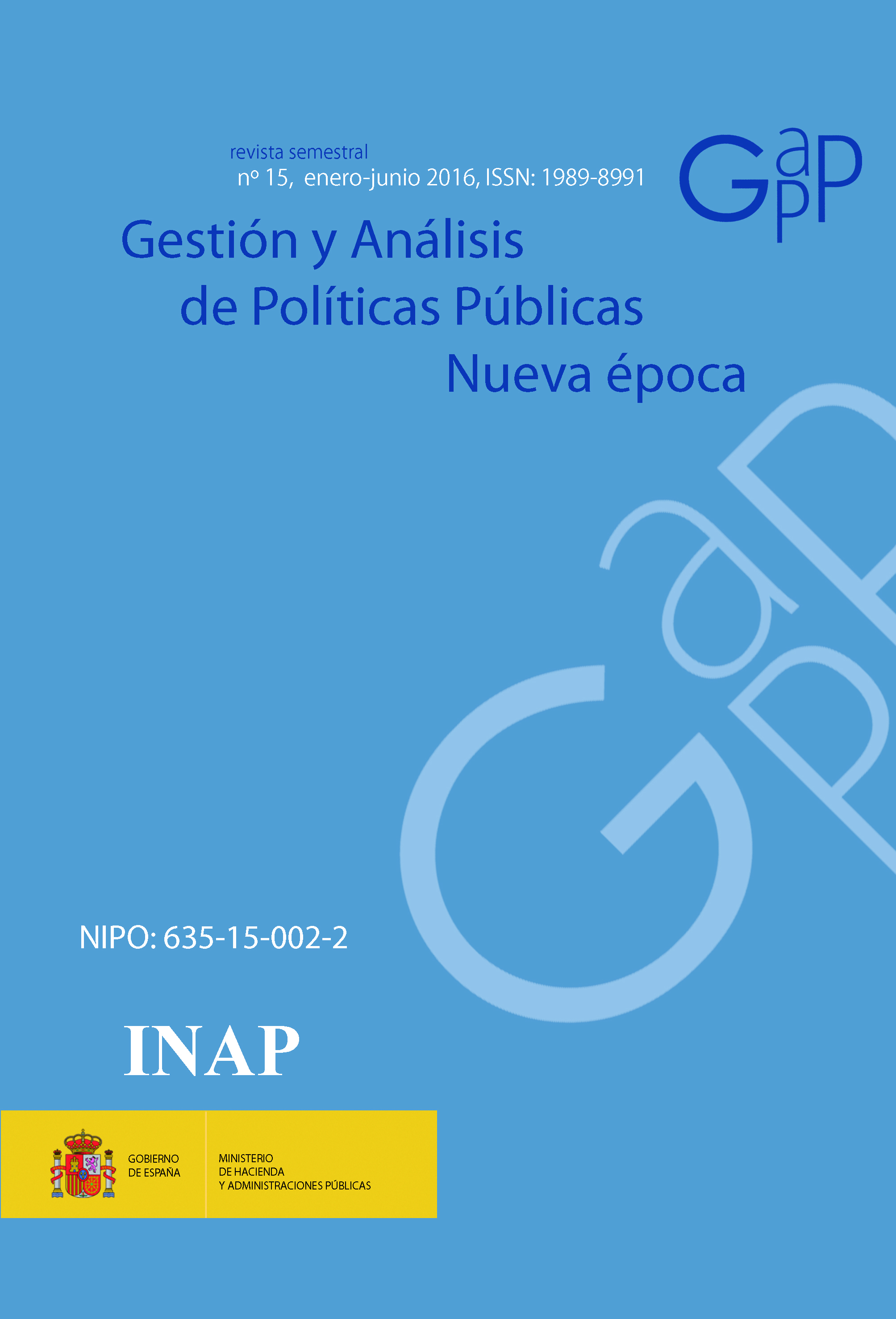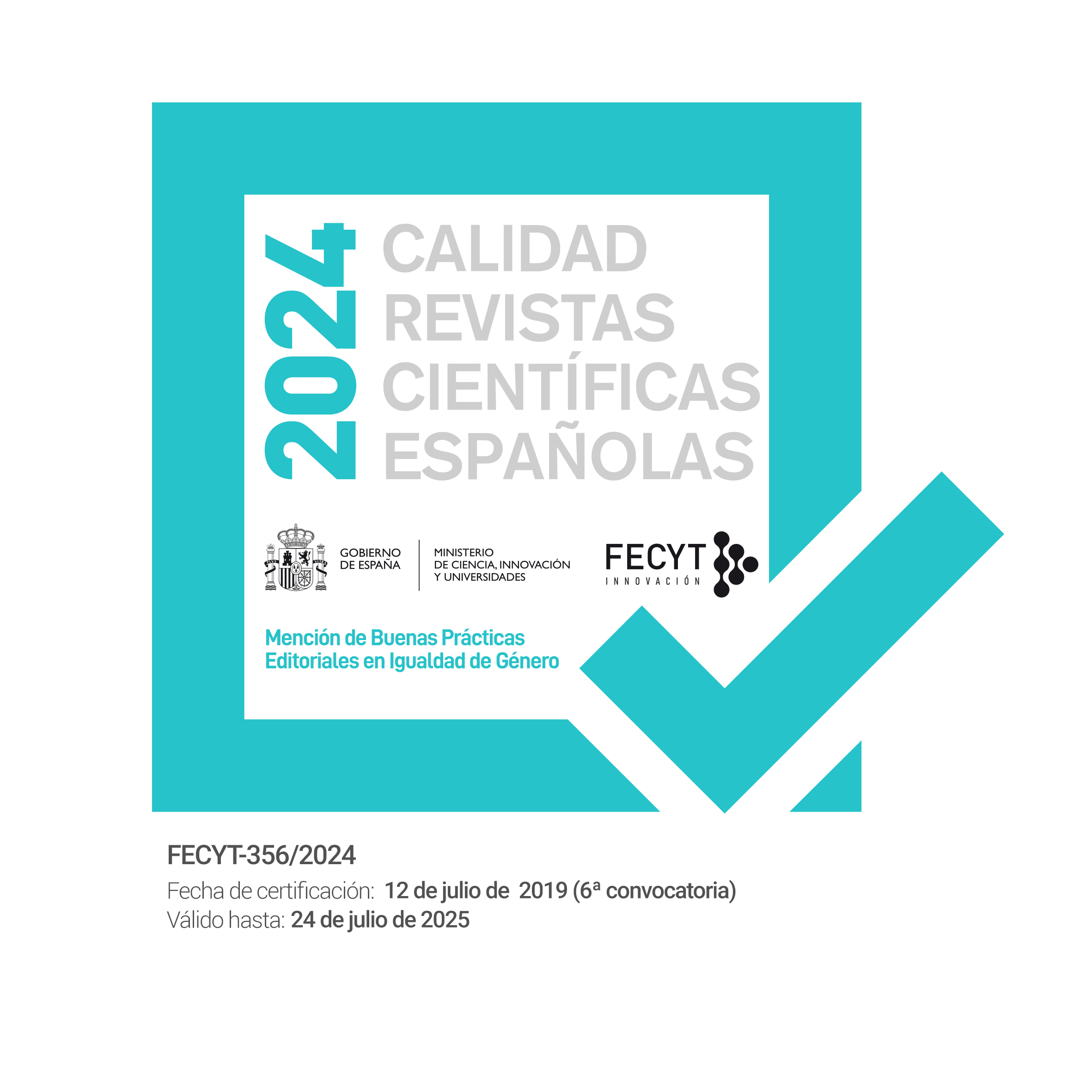Social innovation in the public sphere: Concepts, experiences and obstacles
DOI:
https://doi.org/10.24965/gapp.v0i15.10310Keywords:
Social innovation, public value, approaches to social innovation, Big Society, Innovation Union, barriers to social innovationAbstract
This study focuses on social innovation, emerging conceptual approach to shape and explain the relationships between the state, society and the market. In this sense, governments are beginning to include in their agendas social innovation programs with different approaches, but its implementation and evaluation still denote deficiencies due to the existence of certain structural barriers. The work is done from a governance approach, its novelty residing on the one hand, the treatment of social innovation itself, little studied in Spain and on the other, integration into analysis three elements; approaches to social innovation, their application in national policies, and social obstacles that inhibit social innovation in the public sector.Downloads
References
Arenilla, M. (2011), “Marco teórico actual de la Administración Pública”, en M. Arenilla, dir; Crisis y reforma de la Administración Pública. La Coruña: Editorial Netbiblo.
Arenilla, M. y García, R. (2013), Innovación Social. La integración social en la Administración Pública, La Coruña: Editorial Netbiblo. DOI: 10.4272/978-84-15562-40-5.
BEPA (2010), “Empowering people, driving change: social innovation in the European Union”, Brussels. En línea: http://www.net4society.eu/_media/Social_innovation_europe.pdf. (Consulta: 14-05-2015).
Biggs, R, Westley, F.R. y Carpenter, S. R. (2010), “Navigating the back loop: fostering social innovation and transformation in ecosystem management”, Ecology and Society, 15 (2). En línea: http://www.ecologyandsociety.org/vol15/iss2/art9/. (Consulta: 10-05-2015).
Börzel, T. (1997), “¿Qué tiene de especial el concepto de policy networks? Explorando el concepto y su utilidad para el estudio de la gobernación europea”, Revista de Redes Sociales. En línea: http://revista-redes.rediris.es/webredes/textos/policynet.pdf (Consulta 10-05-2015).
Chambon, J.L. David, A. y Devevey, J. M. (1982), Les innovations sociales. Paris: Presses Universitaires de France.
Christensen, C. M., Baumann, H. Ruggles, R, y Sadtler, T.M. (2006), “Disruptive innovation for social change”. Harvard Business Review, 84(12), pp. 94-101.
Cloutier, J. (2003), “Qu’est-ce que l’innovation sociale?”, Collection Études Théoriques No ET0314, CRISES.
Conejero, E. (2015), “Sinergia entre las organizaciones públicas y privadas: nuevos modelos de gobernanza para la provisión de bienes y servicios públicos”, en M. Arenilla y R, García, dirs; Innovación social: claves y casos. La Coruña: Consejo social de la Universidad de Coruña.
Conejero, E. (2005), “Globalización, gobernanza local y democracia participativa”. Cuadernos Constitucionales de la Cátedra Fadrique Furió Ceriol, 52/53, pp. 13-31.
Christensen, C. M., et al (2006), “Disruptive innovation for social change”. Harvard Business Review, 84(12), pp. 94-101.
Echebarría, J. (2008), “El Manual de Oslo y la innovación social”, Revista Arbor, Volumen CLXXXIV (732), julio-agosto Madrid. DOI: 10.3989/arbor.2008.i732.210.
European Commission. (2011), “Innovation Union”, Brussels. En línea: http://ec.europa.eu/research/innovation-union/index_en.cfm. (Consulta: 11-05-2015).
European Comission. (2012), “Barriers to Social Innovation, FP 7 Project TEPSIE”. Brussels. En línea: http://www.tepsie.eu/images/documents/tepsie.d3.1barrierstosocialinnovation.pdf (Consulta: 14-05-2015).
GECES (Sub-group on Impact Measurement). (2013), “Proposed Approaches to Social Impact Measurement in European Commission legislation and in practice relating to: EuSEFs and the EaSI”, Brussels, European Commission. En línea: http://ec.europa.eu/internal_market/social_business/docs/expert-group/20131128-impact-measurement-subgroup_en.pdf (Consulta: 11-05-2015).
Gershuny, J. (1983), Social Innovation and the Division of Labour. Oxford: Oxford University Press.
Godin, B. (2012), “Social Innovation: Utopias of Innovation from c. 1830 to the Present”, Paper No. 11. Project on the Intellectual History of Innovation. Montréal: INRS.
Grupo Q-EPEA (2009), Barreras y oportunidades de innovación en el sector público vasco. Guipúzcoa: Fundación Q-EPEA.
Halvorsen, T. Hauknes, J. Miles, I. y Roste, R. (2005), “Innovation in the Public Sector. On the differences between public and private sector innovation”, Public Report No. D9. NIFU STEP, Oslo. En línea: http://unpan1.un.org/intradoc/groups/public/documents/apcity/unpan046809.pdf. (Consulta 10-05-2015).
Harayama, Y. y Nitta, Y. (2011), “Introduction: transforming innovation to address social challenges”, en OECD, Fostering Innovation to Address Social Challenges. Paris: OECD Publishing. En línea: http://www.oecd.org/science/inno/47861327.pdf (Consulta 11-05-2015).
Hartley J. (2005), “Innovation in Governance and Public Services: Past and Present”, Public money & Management, 25(1):27-34.
Heiskala, R. (2007), “Social innovations: structural and power perspectives”, en T. Hämäläinen, y R. Heiskala, R, eds; Social innovations, institutional change and economic performance. Making sense of structural adjustment processes in industrial sectors, regions and societies, Finland: SITRA. DOI: 10.4337/9781847206992.00009.
Hillier, J, Moulaert, F. y Nussbaumer, J. (2004), “Trois essais sur le rôle de l’innovation sociale dans le développement territorial”. Géographie, Économie, Société, 2(6), pp. 129-152. DOI: 10.3166/ges.6.129-152.
Hochgerner, J. (2011), “The Analysis of Social Innovations as Social Practice”. En línea: http://www.socialinnovation2011.eu/wp-content/uploads/2011/04/The-Analysis-of-Social-Innovations-as-Social-Practice.pdf (Consulta 10-05-2015).
Howaldt, J. y Schwarz, M. (2010), Social Innovation: Concepts, research fields and international trends. En línea: http://www.asprea.org/imagenes/IMO%20Trendstudie_Howaldt_englisch_Final%20ds.pdf (Consulta: 15-05 -2015).
Hubert, A. (2010), Empowering people, driving change: Social innovation in the European Union. En línea: http://www.net4society.eu/_media/Social_innovation_europe.pdf (Consulta: 15-05-2015).
Kesselring, A. y Leitner, M. (2008), Soziale Innovationen in Unternehmen. Study, compiled by order of the Unruhe Stiftung. Vienna: ZSI.
Leadbeater, C. (1997), The rise of the social entrepreneur. London: NESTA.
Levesque, B. (2012), Social Innovation and Governance in Public Management Systems: Limits of NPM and search for alternatives?, Quebec: Centre de Recherche sur les Innovations Sociales (CRISES).
MaRS (2011), DRAFT Ontario’s Social Innovation Policy Paper. En línea: http://www.marsdd.com/wp-content/uploads/2012/10/Wiki-Social-Innovation-Policy-Paper-.pdf (Consulta: 10-05-2015).
Mguni, N. and Bacon, N. (2010), Taking the temperature of local communities. The Wellbeing and Resilence Measure (WARM), London: The Young Foundation. En línea: http://youngfoundation.org/publications/taking-the-temperature-of-local-communities-the-wellbeing-and-resilience-measure-warm/ (Consulta: 15-05-2015).
Moulaert, F y Nussbaumer, J. (2005), “Defining social economy and its governance at the neighbourhood level: A methodological reflection”, Urban Studies, 42(11), pp. 2071-2088.
Moulaert, F; MacCallum, D; Mehmood, A, y Hamdouch; A. (2010), Social Innovation: Collective action, social learning and transdisciplinary research. Katarsis, EU‘s Framework Program 6. Final Report. En línea: http://cordis.europa.eu/documents/documentlibrary/124376771EN6.pdf (Consulta: 14-05-2015)
Mulgan, G., Tucker, S., Ali, R., y Sanders, B. (2007). Social innovation: what it is, why it matters and how it can be accelerated. London: The Young Foundation. En línea: http://www.sbs.ox.ac.uk/faculty-research/skoll/research/social-innovation-reports-resources/social-innovation-what-it-why-it-matters-how-it-can-be-accelerated (Consulta: 15-05-2015).
Murray, R, Caulier, J, y Mulgan, G. (2010): The open book of social innovation. London: The Young Foundation.
NAO. National Audit Office (2009): Innovation across central government. Report by the comptroller and auditor general | HC 12 Session 2008-2009 | 26 March 2009. London. En línea: http://www.nao.org.uk/wp-content/uploads/2009/03/080912es.pdf (Consulta 10-05-2015).
Nauta, F, y Kasbergen, P. (2009), OECD Literature Review Public Sector Innovation. En línea: http://han.surfsharekit.nl:8080/get/smpid:15206/DS1 (Consulta: 11-05-2015).
Ngumi, N. y Bacon, N. (2010 Taking the temperature of local communities The Wellbeing and Resilience Measure (WARM). London: The Young Foundation. En línea: http://youngfoundation.org/wp-content/uploads/2012/10/Taking-the-Temperature-of-Local-Communities.pdf (Consulta: 14-05-2015).
Ogburn, W. F. (1957), “Cultural Lag as Theory”. Sociology and Social Research, January-February: 167-174.
Schumpeter, J. A. (1934), The Theory of Economic Development. Cambridge, MA: Harvard University Press.
Pol, E. y Ville, S. (2009): “Social innovation: Buzz word or enduring term?”, Journal of Socio-Economics, 38 (6): 878-885. DOI: 10.1016/j.socec.2009.02.011.
Schmitz, B. Krlev, G. Mildenberger. G, Bund, E, y Hubrich, D. (2013), Paving the Way to Measurement–A Blueprint for Social Innovation Metrics. A short guide to the research for policy makers. (TEPSIE), European Commission, 7th Framework Programme, Brussels: European Commission. En línea: http://www.tepsie.eu/images/documents/tepsie25.pdf (Consulta; 11-05-2015).
Thenint, H. (2010), “Mini Study 10 Innovation in the public sector”, Global Review of Innovation Intelligence and Policy Studies. Inno Grips: 1-51.
SIX y Young Fundation (2010), Study on social innovation. En línea: http://youngfoundation.org/wp-content/uploads/2012/10/Study-on-Social-Innovation-for-the-Bureau-of-European-Policy-Advisors-March-2010.pdf. (Consulta: 15-05-2015).
Westley, F. y Antadze, N. (2010), “Making a Difference Strategies for Scaling Social Innovation for Greater Impact”, The Innovation Journal: The Public Sector Innovation Journal, Vol. 15(2): 1-19. En línea: http://www.innovation.cc/scholarly-style/westley2antadze2make_difference_final.pdf. (Consulta: 10-05-2015).
Z.S.I. (2008), Simulating social development. En línea: https://www.zsi.at/object/publication/1399/attach/ZSI_Profile_EN.pdf (Consulta: 10-05-2015).












